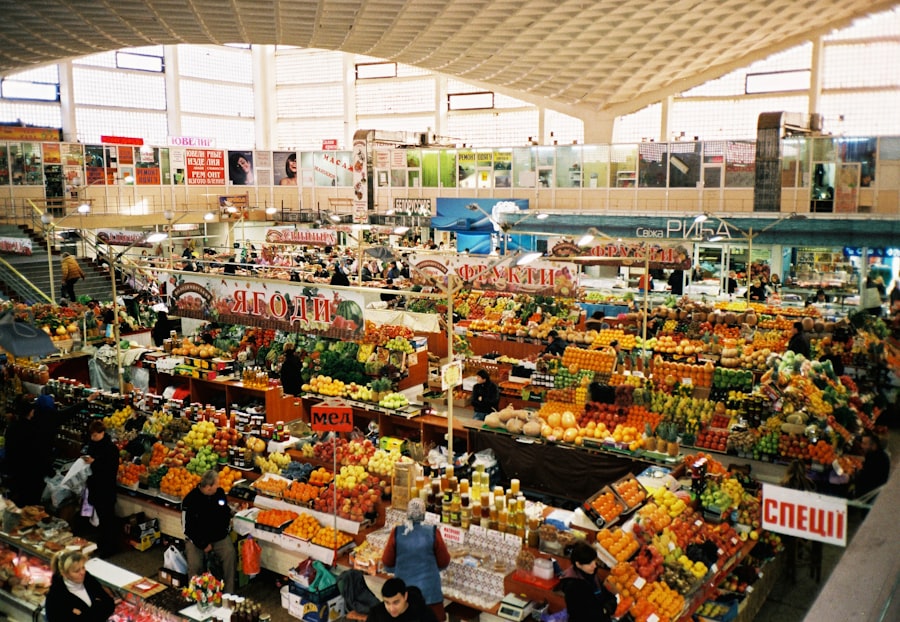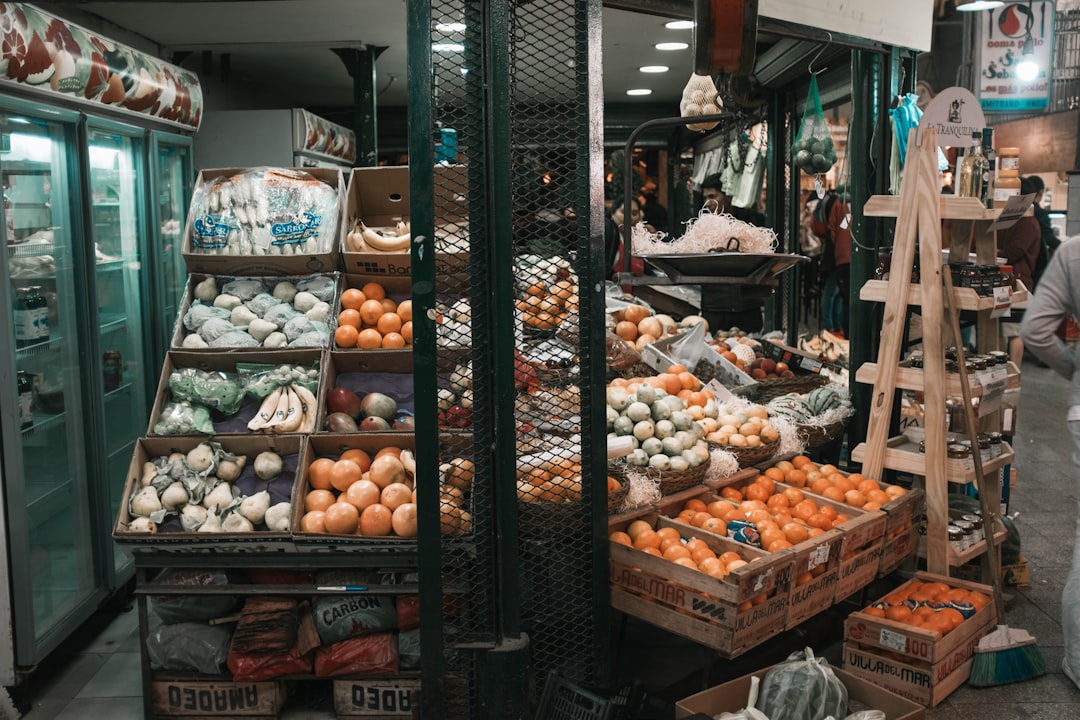The grocery market serves as a vital component of the global economy, providing essential goods that sustain daily life. It encompasses a wide array of products, from fresh produce and dairy to canned goods and household items. This sector is not only crucial for individual consumers but also plays a significant role in the supply chain, influencing agricultural practices, transportation, and retail strategies.
As the world evolves, so too does the grocery market, adapting to changing consumer preferences, technological advancements, and economic fluctuations. In recent years, the grocery market has witnessed a transformation driven by various factors, including the rise of e-commerce, shifts in consumer behavior, and increased competition among retailers. The landscape is marked by a blend of traditional brick-and-mortar stores and innovative online platforms, each vying for consumer attention and loyalty.
Understanding the dynamics of this market is essential for stakeholders, including consumers, suppliers, and policymakers, as it shapes not only purchasing habits but also broader economic trends.
Key Takeaways
- The grocery market is a highly competitive industry with a wide range of products and services.
- Big grocery chains have significant power and influence over pricing and product availability in the market.
- Suppliers play a crucial role in determining grocery prices and can impact consumer choices.
- Government regulations can have a significant impact on the grocery market, affecting pricing and consumer options.
- Consumer perception and trust are essential factors in the grocery market, influencing purchasing decisions and brand loyalty.
The Power of Big Grocery Chains
Big grocery chains wield significant influence over the market landscape, often dictating prices and availability of products. These large retailers benefit from economies of scale, allowing them to negotiate better deals with suppliers and pass on savings to consumers. Their extensive distribution networks enable them to stock a wide variety of products, catering to diverse consumer needs while maintaining competitive pricing.
This dominance can create challenges for smaller, independent grocers who struggle to compete on price and selection. Moreover, big grocery chains have the resources to invest in advanced technology and marketing strategies that enhance customer experience. They utilize data analytics to understand consumer preferences and optimize inventory management, ensuring that popular items are always in stock.
However, this power can also lead to concerns about monopolistic practices, as smaller competitors may find it increasingly difficult to survive in an environment dominated by a few large players. The balance between competition and consolidation remains a critical issue in the grocery market.
The Influence of Suppliers on Grocery Prices

Suppliers play a pivotal role in determining grocery prices, as they provide the products that retailers sell to consumers. The relationship between suppliers and grocery chains is often complex, characterized by negotiations over pricing, quality standards, and delivery schedules. Large grocery chains typically have more leverage in these negotiations due to their purchasing power, which can result in lower prices for consumers but may also squeeze suppliers’ profit margins.
Additionally, fluctuations in supply chain dynamics can significantly impact grocery prices. Factors such as weather conditions affecting crop yields, transportation costs, and global trade policies can all contribute to price volatility. For instance, a drought in a major agricultural region can lead to reduced supply and higher prices for fresh produce.
As such, both retailers and consumers must remain vigilant about these external influences that can affect the cost of groceries.
The Role of Government Regulations in the Grocery Market
| Metrics | Data |
|---|---|
| Number of Government Regulations | 50 |
| Impact on Market Competition | Positive |
| Consumer Protection Laws | Yes |
| Price Control Measures | No |
Government regulations play a crucial role in shaping the grocery market by establishing standards for food safety, labeling, and fair trade practices. These regulations are designed to protect consumers from harmful products while ensuring that businesses operate fairly within the marketplace. For example, agencies like the Food and Drug Administration (FDA) in the United States enforce guidelines that govern food safety and labeling requirements, helping consumers make informed choices about the products they purchase.
However, regulatory frameworks can also pose challenges for grocery retailers. Compliance with stringent regulations often requires significant investment in quality control measures and staff training. Smaller retailers may find it particularly burdensome to meet these requirements compared to larger chains that have more resources at their disposal.
As such, ongoing dialogue between government entities and industry stakeholders is essential to create a balanced regulatory environment that promotes both consumer safety and business viability.
Consumer Perception and Trust in the Grocery Market
Consumer perception plays a vital role in shaping the grocery market landscape. Trust is a key factor influencing purchasing decisions; consumers are more likely to buy from retailers they perceive as reliable and transparent. Factors such as product quality, ethical sourcing practices, and customer service contribute to this perception.
In an age where information is readily available online, consumers are increasingly informed about where their food comes from and how it is produced.
Positive reviews can enhance a retailer’s reputation, while negative feedback can quickly tarnish it.
As a result, grocery chains are investing more in building trust through transparency initiatives, such as providing detailed information about sourcing practices and engaging with customers on social media platforms. This shift towards greater accountability reflects a broader trend in consumer behavior that prioritizes ethical considerations alongside price and convenience.
The Impact of Online Grocery Platforms

The emergence of online grocery platforms has revolutionized the way consumers shop for food and household items. With just a few clicks, shoppers can browse an extensive selection of products from the comfort of their homes and have them delivered directly to their doorsteps. This convenience has led to a surge in online grocery shopping, particularly during the COVID-19 pandemic when many consumers sought safer alternatives to traditional shopping methods.
Online grocery platforms have also introduced new competition into the market, challenging established brick-and-mortar retailers to adapt their strategies. Many traditional grocery chains have responded by enhancing their online presence and offering delivery or curbside pickup options. However, this shift has not come without its challenges; issues such as inventory management, delivery logistics, and maintaining product quality during transit require careful planning and execution.
As online shopping continues to grow in popularity, retailers must find innovative ways to meet consumer expectations while navigating these complexities.
The Role of Advertising and Marketing in the Grocery Market
Advertising and marketing are integral components of the grocery market that influence consumer behavior and purchasing decisions. Retailers employ various strategies to attract customers, from traditional print advertisements to digital marketing campaigns on social media platforms.
In addition to driving sales, effective marketing can help build brand loyalty among consumers. Retailers that successfully communicate their values—such as sustainability or community support—can foster deeper connections with their customers. As consumers become more discerning about where they spend their money, marketing efforts that resonate with their values can significantly impact purchasing decisions.
Consequently, grocery chains must continually refine their marketing strategies to remain relevant in an ever-evolving marketplace.
The Effects of Mergers and Acquisitions on Grocery Prices
Mergers and acquisitions within the grocery sector can have profound implications for pricing structures and market competition. When two large retailers merge, they often gain increased bargaining power with suppliers, which can lead to lower prices for consumers in the short term. However, this consolidation can also reduce competition in the long run, potentially resulting in higher prices as fewer players dominate the market.
The effects of these corporate maneuvers extend beyond pricing; they can also influence product availability and variety. A merger may lead to streamlined operations that eliminate redundancies but could also result in fewer choices for consumers if certain brands or products are discontinued. As such, regulatory bodies often scrutinize proposed mergers to assess their potential impact on competition and consumer welfare.
Striking a balance between fostering business growth and maintaining a competitive marketplace remains a critical challenge for regulators.
The Role of Consumer Behavior in the Grocery Market
Consumer behavior is a driving force behind trends in the grocery market. Factors such as demographics, lifestyle choices, and cultural influences shape how individuals approach shopping for groceries. For instance, younger generations may prioritize convenience and sustainability when making purchasing decisions, leading to increased demand for organic products or ready-to-eat meals.
Understanding these behavioral patterns is essential for retailers seeking to tailor their offerings to meet consumer needs effectively. By analyzing shopping habits through data analytics and market research, grocery chains can identify emerging trends and adjust their inventory accordingly. Additionally, engaging with consumers through surveys or feedback mechanisms allows retailers to gain insights into preferences that may not be immediately apparent through sales data alone.
The Impact of Economic Factors on Grocery Prices
Economic factors play a significant role in determining grocery prices at both local and global levels. Inflation rates, currency fluctuations, and changes in fuel prices can all contribute to variations in food costs. For example, rising fuel prices can increase transportation costs for suppliers, which may ultimately be passed on to consumers through higher prices at the checkout.
Moreover, economic downturns can lead to shifts in consumer spending habits as individuals become more budget-conscious. During challenging economic times, shoppers may prioritize essential items over luxury goods or opt for generic brands instead of name brands. Retailers must remain attuned to these economic indicators to adjust pricing strategies accordingly while still meeting consumer demand.
Strategies for Consumers to Navigate the Grocery Market
Navigating the grocery market effectively requires consumers to adopt strategic approaches that maximize value while minimizing costs. One effective strategy is meal planning; by organizing meals for the week ahead, shoppers can create focused shopping lists that reduce impulse purchases and food waste. This practice not only saves money but also encourages healthier eating habits by promoting home-cooked meals.
Additionally, consumers can take advantage of loyalty programs offered by grocery chains that provide discounts or rewards for frequent shoppers. Utilizing coupons or digital promotions can further enhance savings on everyday purchases. By staying informed about seasonal sales or local farmers’ markets, consumers can access fresh produce at competitive prices while supporting local agriculture.
In conclusion, the grocery market is a complex ecosystem influenced by various factors ranging from big chain dynamics to consumer behavior patterns. Understanding these elements empowers consumers to make informed choices while navigating this essential sector of daily life.
In exploring the complexities of the grocery market, one might wonder if the system is rigged against consumers. A related article that delves into the intricacies of market dynamics and consumer impact can be found on How Wealth Grows. This article provides insights into how market forces and corporate strategies might influence pricing and availability of goods. For a deeper understanding, you can read more about these economic factors by visiting How Wealth Grows.
WATCH NOW! How Grocery Prices Are a Hidden Corporate Tax 🤑🤑🤑🤑
FAQs
What is the grocery market?
The grocery market refers to the industry that involves the buying and selling of food and household products to consumers. This includes supermarkets, grocery stores, and online grocery retailers.
Is the grocery market rigged?
There is no definitive evidence to suggest that the entire grocery market is rigged. However, there have been instances of price-fixing and anti-competitive behavior by some companies in the industry.
What are some examples of anti-competitive behavior in the grocery market?
Examples of anti-competitive behavior in the grocery market include price-fixing among suppliers, collusion between retailers to fix prices, and exclusionary tactics to prevent new competitors from entering the market.
How are consumers affected by potential rigging in the grocery market?
If the grocery market is rigged, consumers may experience higher prices, limited choices, and reduced quality of products. This can ultimately harm consumer welfare and lead to a lack of competition in the market.
What measures are in place to prevent rigging in the grocery market?
Antitrust laws and competition authorities are in place to prevent and punish anti-competitive behavior in the grocery market. These measures aim to promote fair competition, protect consumer interests, and ensure a level playing field for all market participants.
